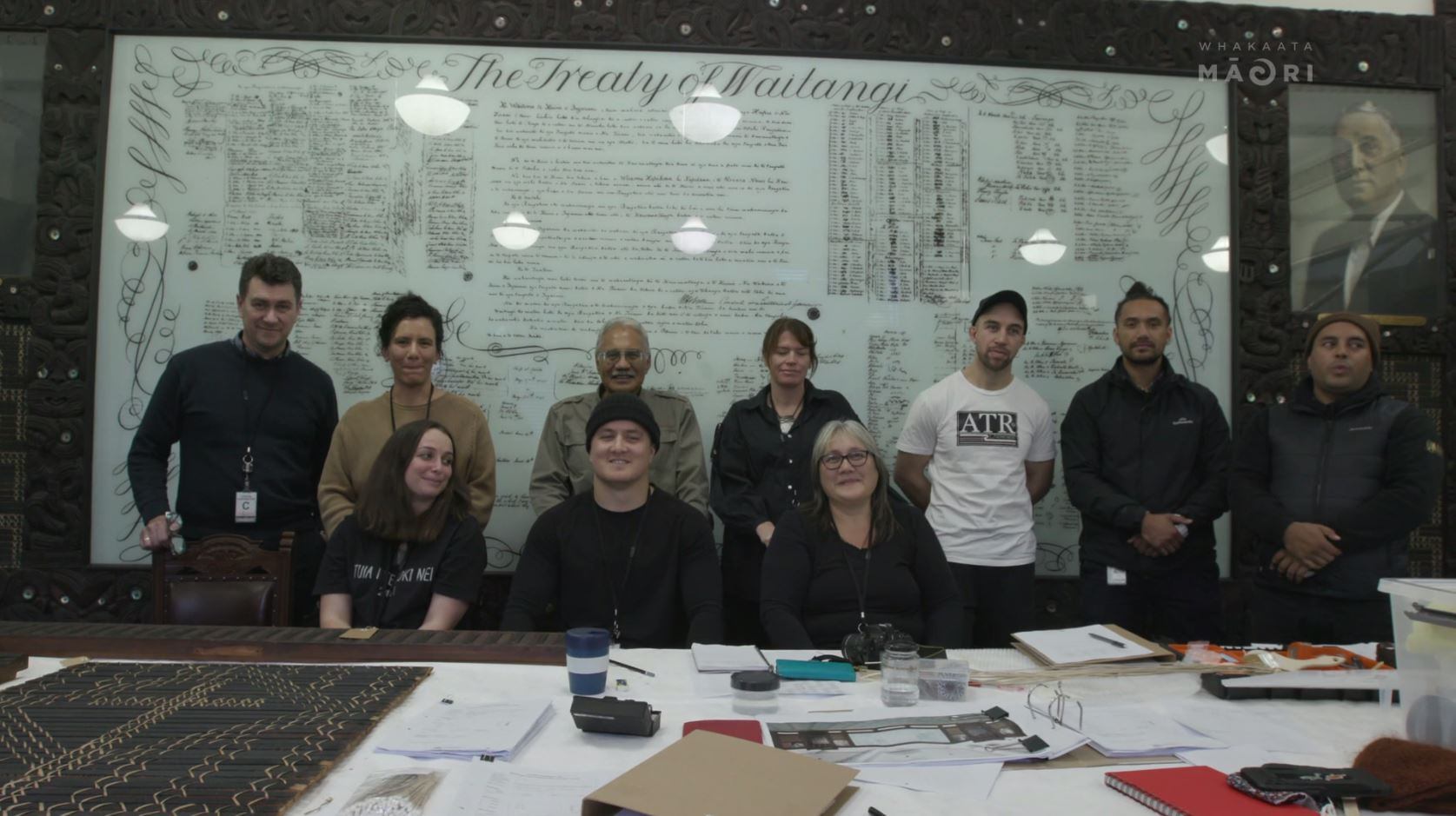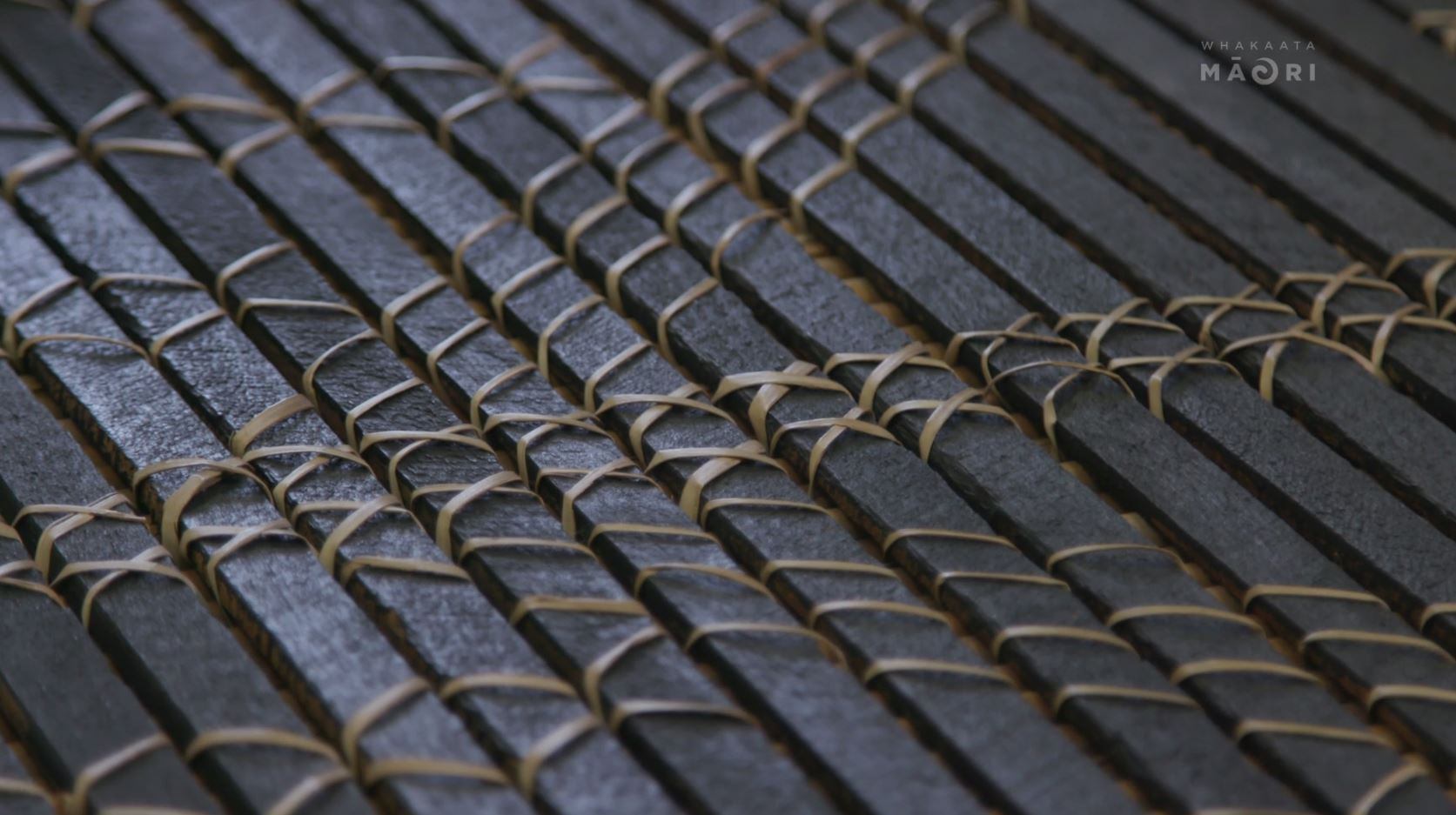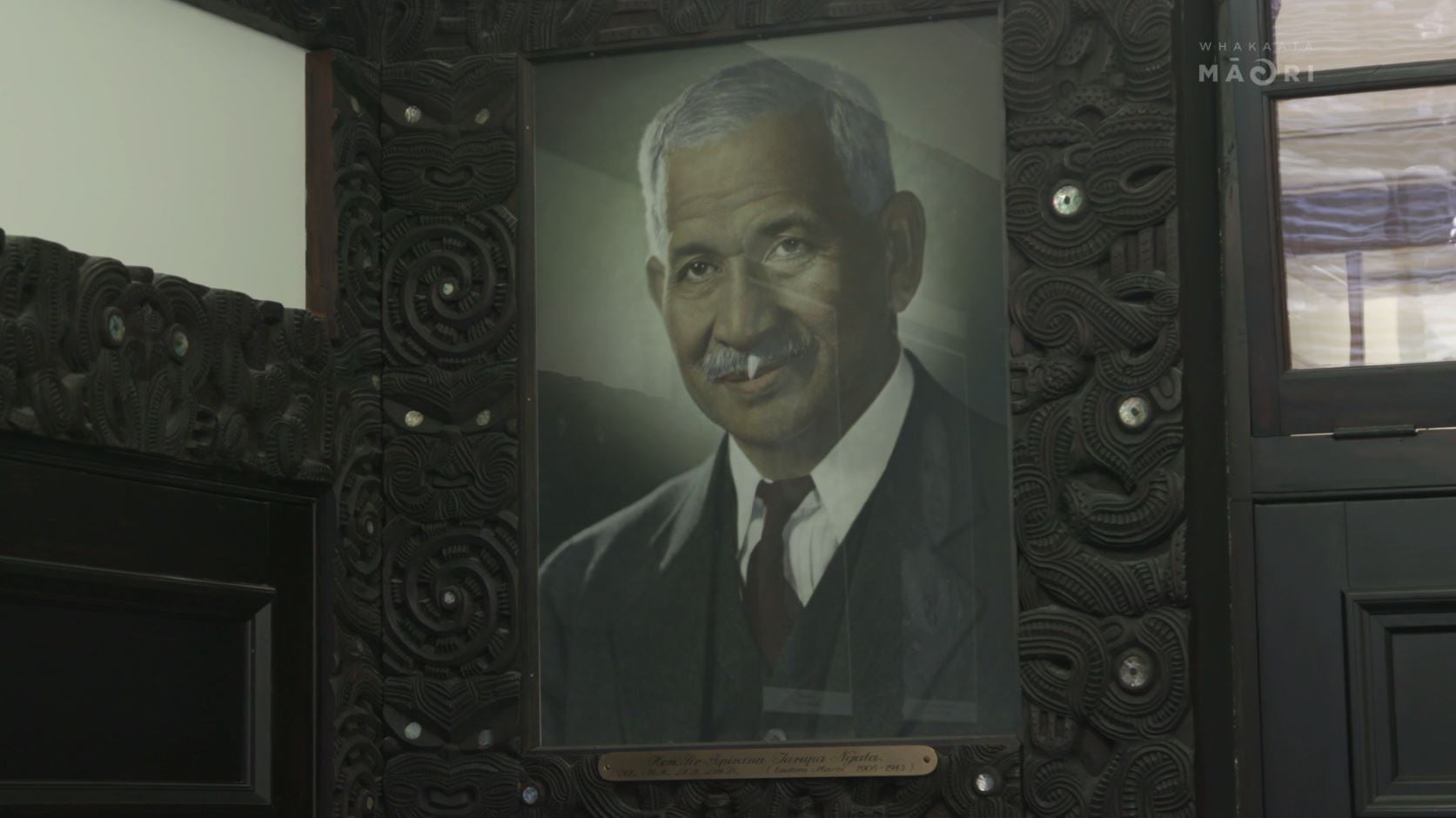Next month marks the 100th anniversary of the opening of Parliament’s Maori Affairs committee room, Mātangireia and, to celebrate, it’s getting a face-lift.
Led by Heritage New Zealand kaihautu pouhere taonga Dean Whiting, the restoration project will ensure the unique room adorned with carvings and tukutuku panels is at its optimum.
“It really expresses Māori at that time, capturing the arts, where they were at and the political aspirations of our people being expressed so powerfully in this humble room, I would say modest room in size,” Whiting says.

Kaimahi and interns working on the restoration project of Mātangireia. Photo source: Te Ao with Moana
The room’s construction in 1922 was led by Sir Apirana Ngata, who at that time was pushing for a revival of Māōri arts and culture.
Every panel and carving is being meticulously recorded by interns including descendants of the original artists.
"So this is very early on in that journey of revitalisation of the arts, with Te Arawa carvers coming in to do this work, that was one of the few areas in the country where the legacy of whakairo had been maintained."
Whiting says the work is being carried out with a degree of reverence as restorers imagine the discussions and decisions made in the room that would have impacted Māori for 100 years.
“We speak quite quietly in here. We are in a bit of reverence of the words that are embodied in all of these tukutuku panels and this whakairo and even very recently I know of tribes coming and, for part of their settlement processes, have chosen to use this room for those very significant moments in their history. So it is a witness to so much and I suppose, over time, it's built this sort of all-knowing presence.”

Tuktutuku panles in Mātangireia. Source: Te Ao with Moana
Master weaver and Heritage New Zealand restorer Jim Schuster says the restoration is unique because it is not in a traditional wharenui.
“It's an ongoing history. I mean, it would've been a first and a revelation probably back in the day when it opened in 1922. Now that's a lot earlier than a lot of wharenui that are around the motu.”
Jim Schuster says Sir Apirana’s vision was to use traditional arts to uplift the people after turbulent times including the 1918 flu epidemic, which decimated the Māori population.
“This is a special place. It was a way of uplifting the people again and getting people to come and weave tukutuku was not only binding these elements but binding the people together.”
Mātangireia will reopen on August 23.

The construction of Mātangireia in 1922 was led by Sir Apirana Ngata, who at that time was pushing for a revival of Māōri arts and culture. Source: Te Ao with Moana
